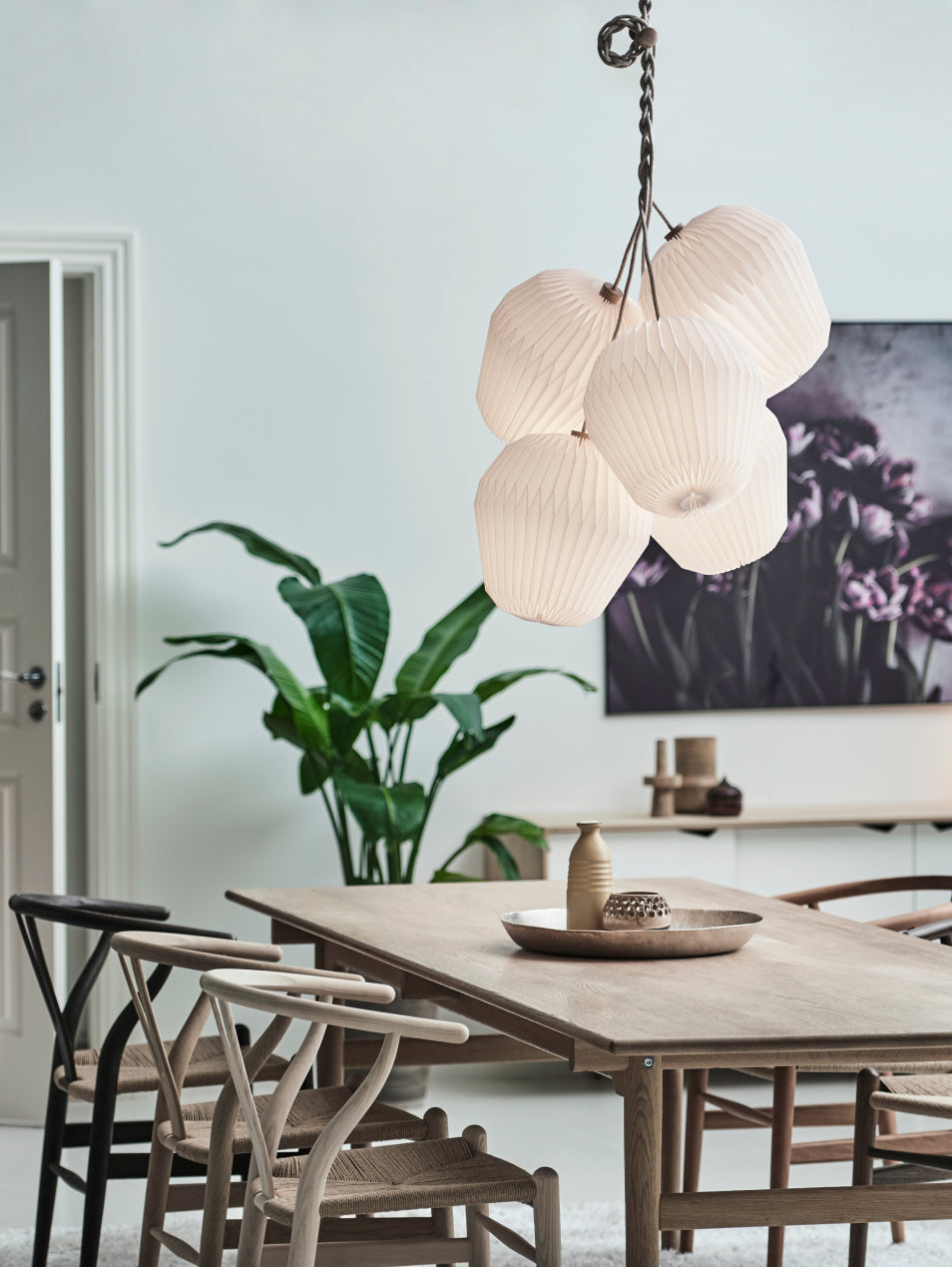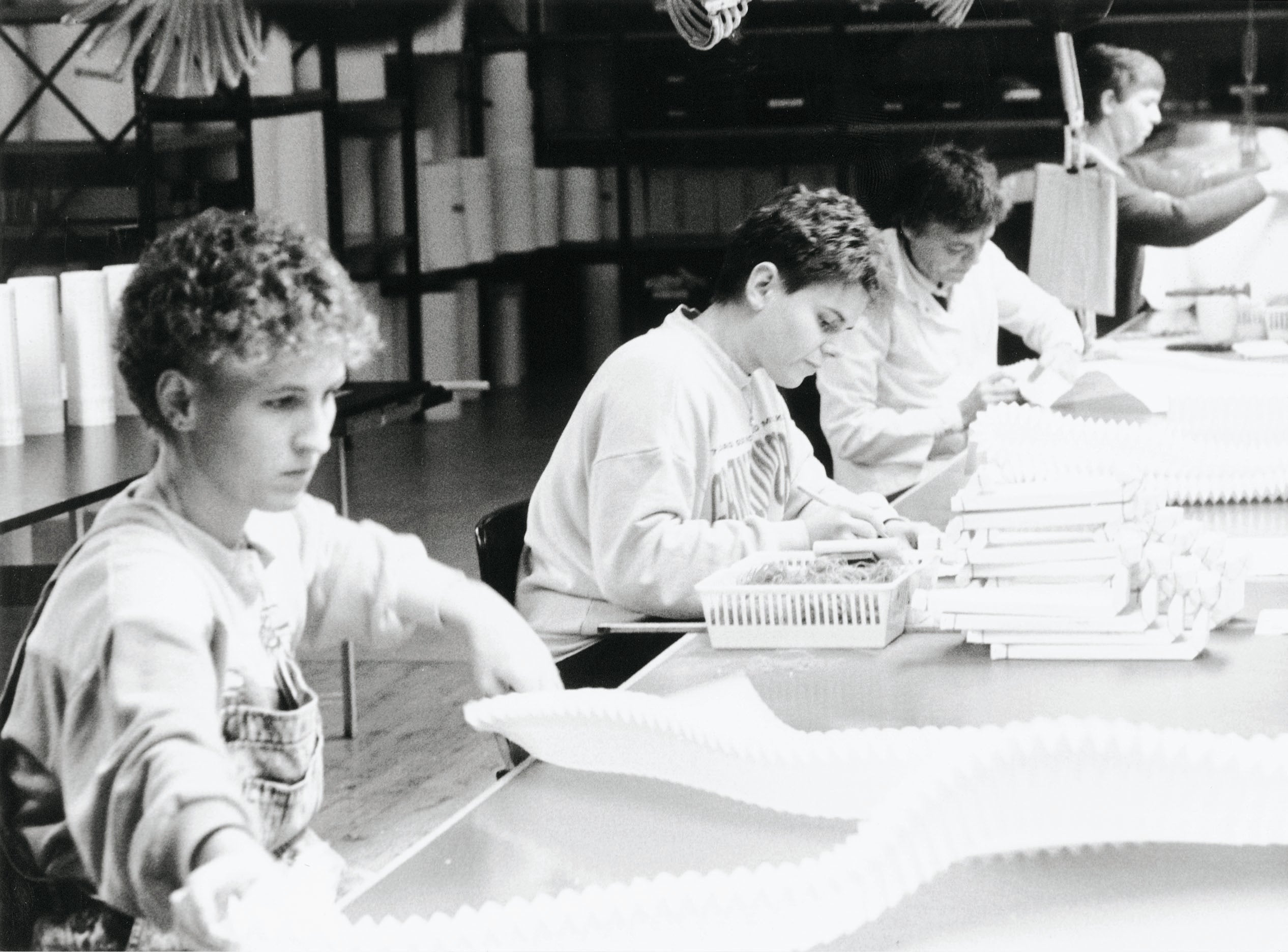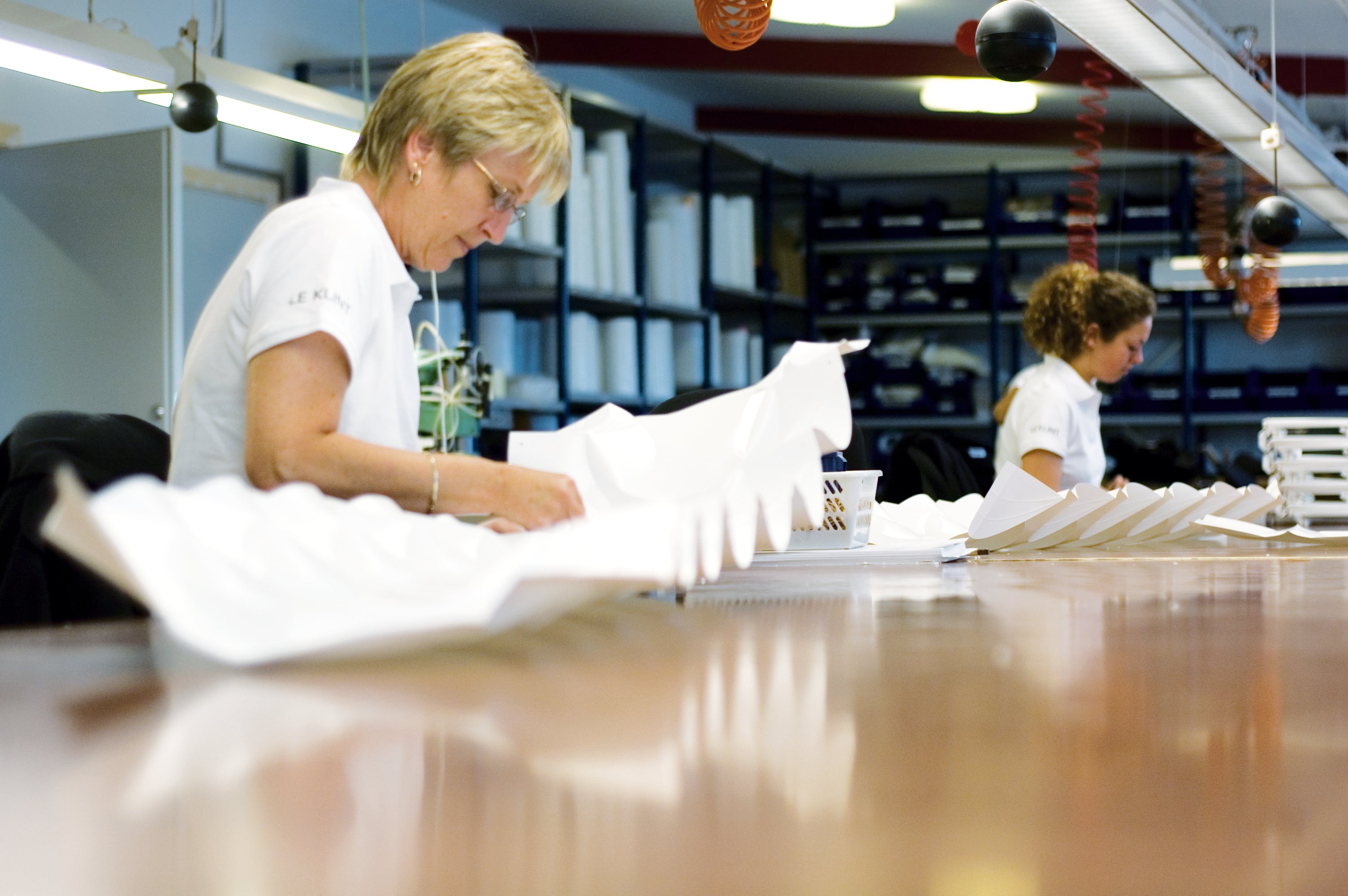Unique craftsmanship
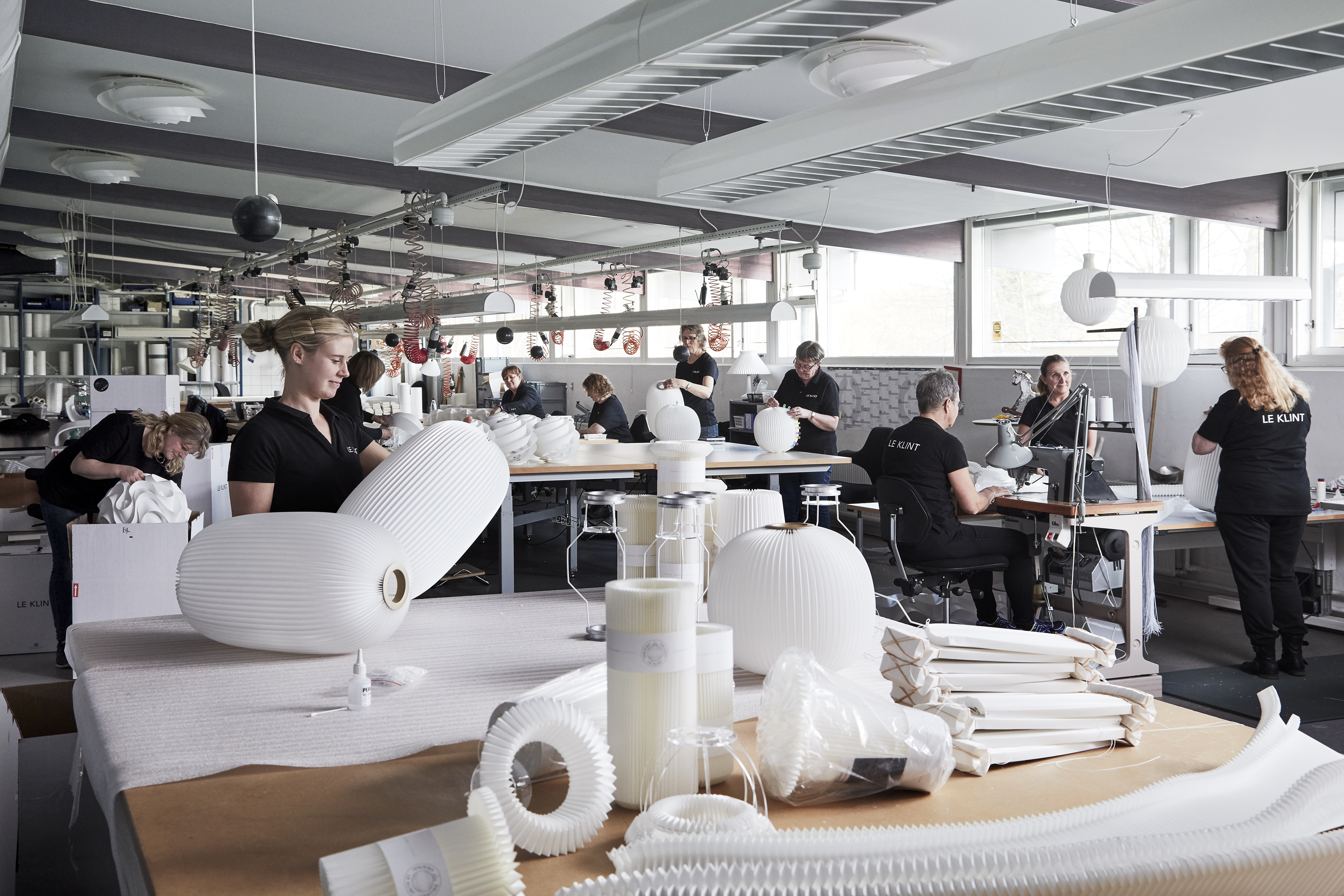

The pleated lamp shade in paper and plastic is still at the very heart of our 75-year-old design company. To this day the craftsmanship of the cross pleated lamp shade is unique and a handicraft that is only mastered at Le Klints original Pleating Studio in Odense, Denmark.
Our "secret weapon"
The artisans, colloquially referred to as the Pleating Technicians, are highly skilled and the driving force that enables the legacy of the hand pleated lamp shades to continue.
Authentic design - Skilled craftsmanship
To become a skilled pleating technician at Le Klint takes approximately three years and most of the employees in the pleating studio have been with the company for more than 25 years. Usually, each Trainee’s first year, ends with them having learned how to master the basic technique of pleating. Progressively within the next two to three years and depending on the speed and dexterity of each trainee, all pleating patterns, styles, shapes, and sizes are gradually introduced to the trainee, until they instinctively know how to pleat and fold every design in the Le Klint catalogue. To become a qualified Pleating Technician here at Le Klint, patience is a must - stamina is an asset.
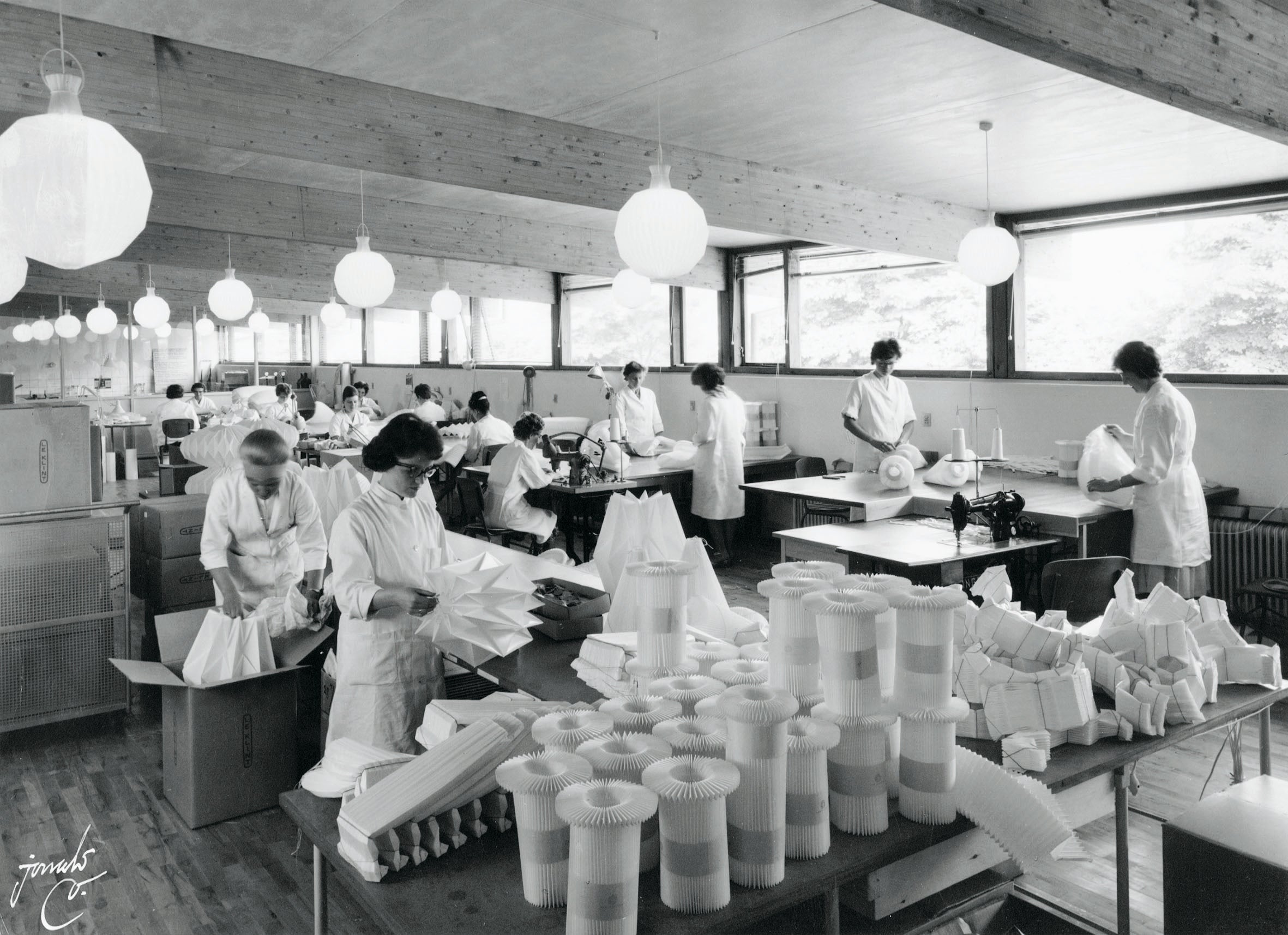

A lamp is much more than a shade
Due to the vast experience within this group, they are often consulted when new ideas are brought to the table. All parts are made from the best materials and often produced by local companies situated close to Le Klint. The parts are put together at the facility in Odense and shipped from here to all parts of the world.
The patterns are embossed
The folding employees learn both to fold the right-angled pleats as in the classic Model 1 as well as the wavy folds on the Sinus Line. The pleats are folded according to embossed patterns in paper or plastic material. The lines are not cut into the material but embossed as guidelines for folding. The embossing machine, developed at Le Klint, consists of a brass roller that embosses the patterns into a roll of material. Therefore, there is a roller for each individual model.
From embossing machine to folding and sewing
Once the material is embossed, it is cut into pieces corresponding to a lamp or lampshade, and the pleating can begin. After pleating, the shades are sewn with a seam, naturally on the inside where possible, and the shade is turned so the seam is not visible. When the lamp is embossed, folded, and sewn, it lands in the quality control department. At this point in the process, the lamp has already gone through several stages, and there is continuous monitoring to detect any flaws in the material or errors in the pleating or sewing process. Here, the lamp undergoes final inspection by turning, twisting, and studying it carefully one last time before being packed with the cord and socket for transport to the rightful owner
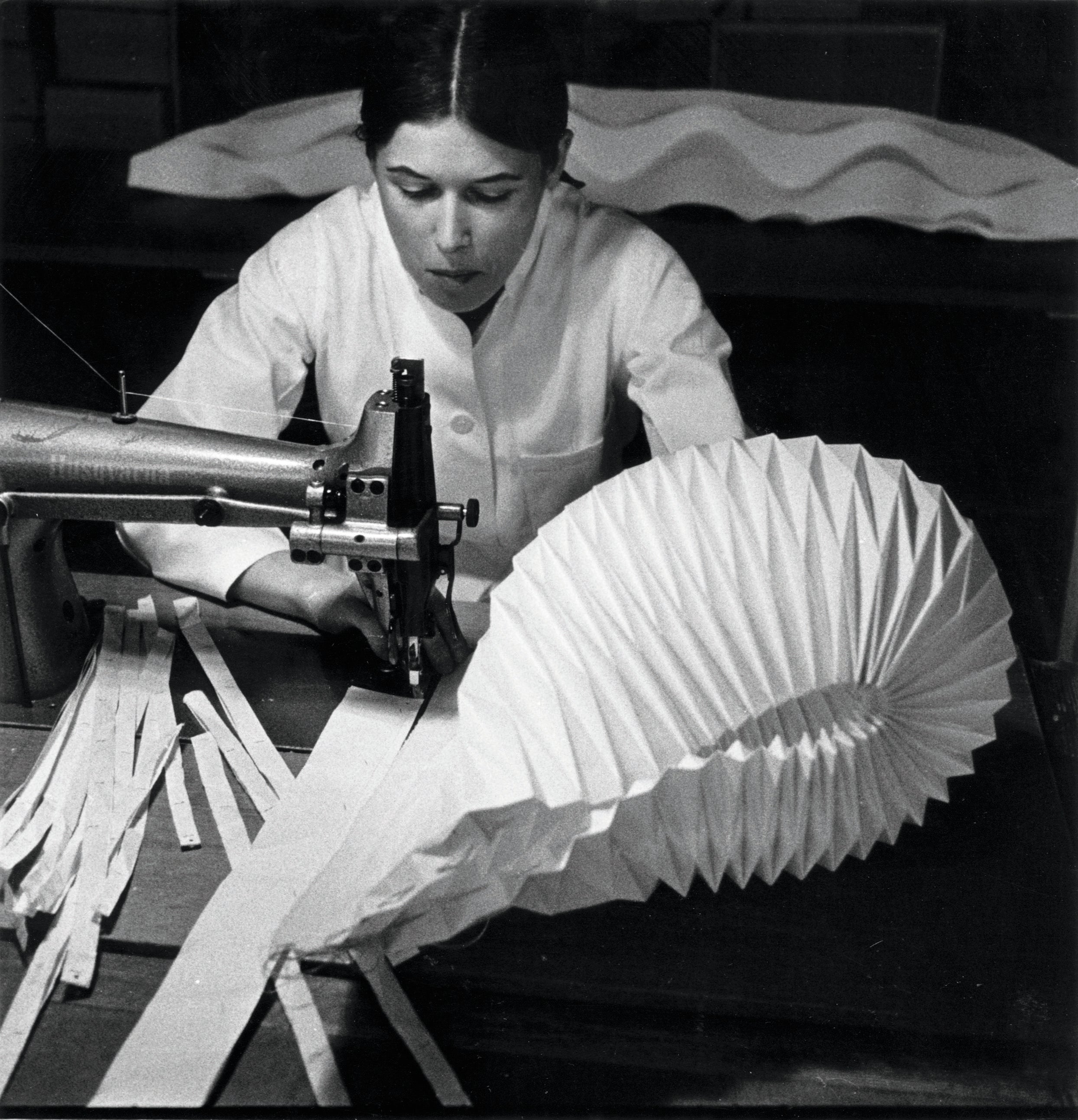

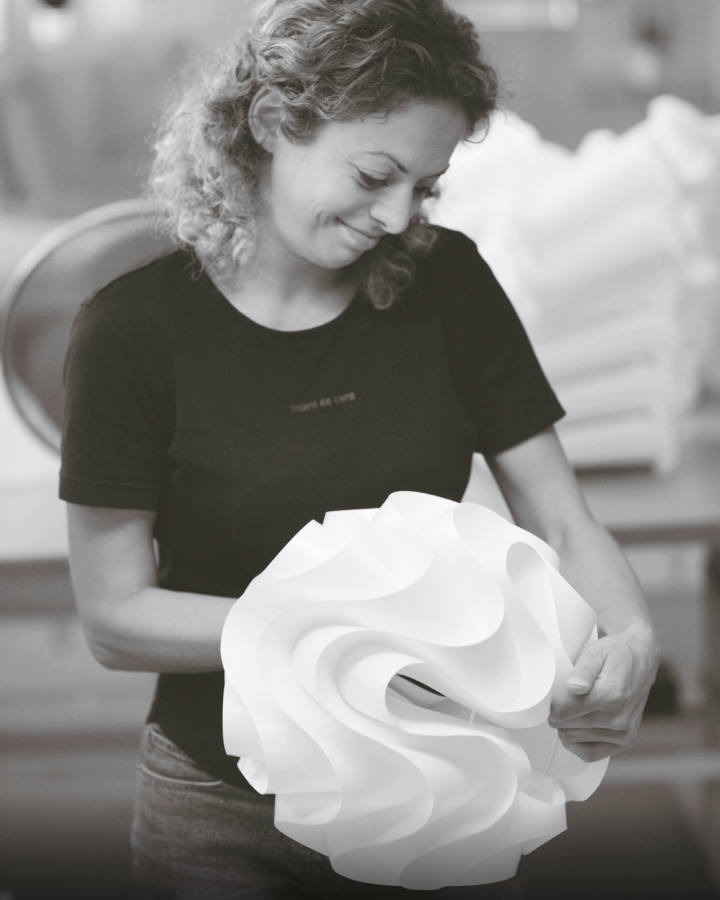
The dexterity of the pleating technicians
Over the years, the significant skills of the employees have translated the designers model proposals, and they are consulted when new ideas need to be translated into actual production.
